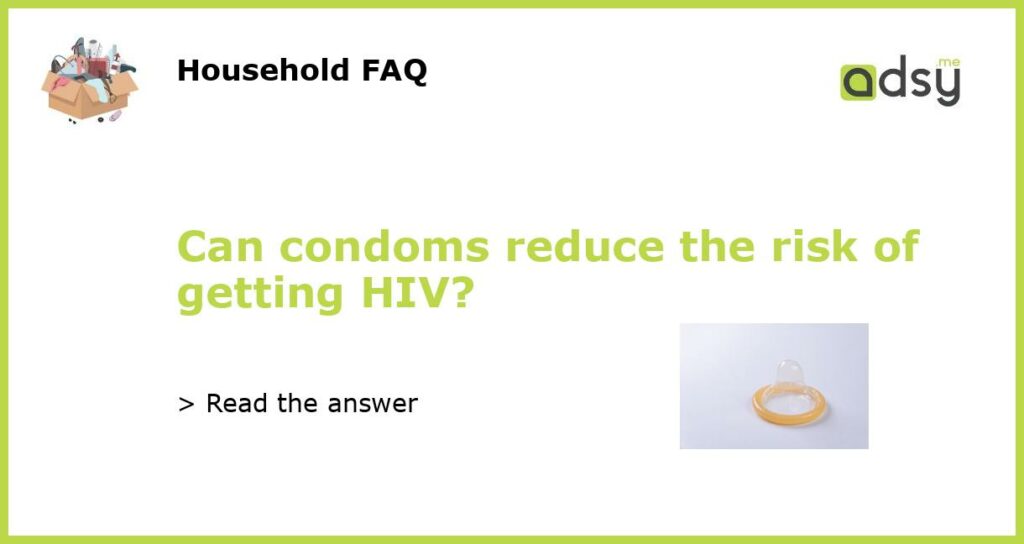What is HIV?
HIV (Human Immunodeficiency Virus) is a virus that attacks the immune system, weakening the body’s ability to fight off infections and diseases. If left untreated, HIV can progress to AIDS (Acquired Immune Deficiency Syndrome), which is life-threatening. HIV spreads through bodily fluids, such as blood, semen, vaginal fluids, and breast milk. It can be transmitted through unprotected sexual intercourse, sharing needles or syringes, or from mother to child during pregnancy, childbirth, or breastfeeding.
How effective are condoms in preventing HIV transmission?
Condoms are a barrier method of contraception that can help reduce the risk of HIV transmission. According to the Centers for Disease Control and Prevention (CDC), correctly using condoms every time during sexual activity can greatly reduce the risk of HIV and other sexually transmitted infections (STIs) transmission. The rate of HIV transmission can be reduced by as much as 99% when condoms are used consistently and correctly.
What are the benefits of using condoms?
Condoms not only provide protection against HIV and other STIs but also act as a contraceptive method. They can also help reduce the risk of unintended pregnancies, which can be harmful to both the mother and the child. Additionally, condoms are widely available and can be easily accessed without a prescription, making them a popular choice for many couples.
What are some other ways to prevent HIV transmission?
Aside from condoms, there are other methods to prevent HIV transmission. One is pre-exposure prophylaxis (PrEP), which involves taking a pill daily to lower the risk of getting infected with HIV. This is typically recommended for those who are at a higher risk of HIV infection, such as people with an HIV-positive partner or those who engage in unprotected sex. Another way to reduce HIV transmission is through early detection and treatment. HIV-positive individuals who receive early treatment can lower their viral load, which reduces their risk of transmitting the virus to their partners.
Condoms are an effective way to prevent HIV and other STIs transmission. When used consistently and correctly, condoms can greatly reduce the risk of HIV transmission. Other methods, such as PrEP and early detection and treatment, can also be used to prevent HIV transmission. It’s important to remember that the best way to protect oneself from HIV and other STIs is to practice safe sex and have open and honest communication with sexual partners. For more information and resources on HIV prevention and treatment, visit the CDC’s website.






